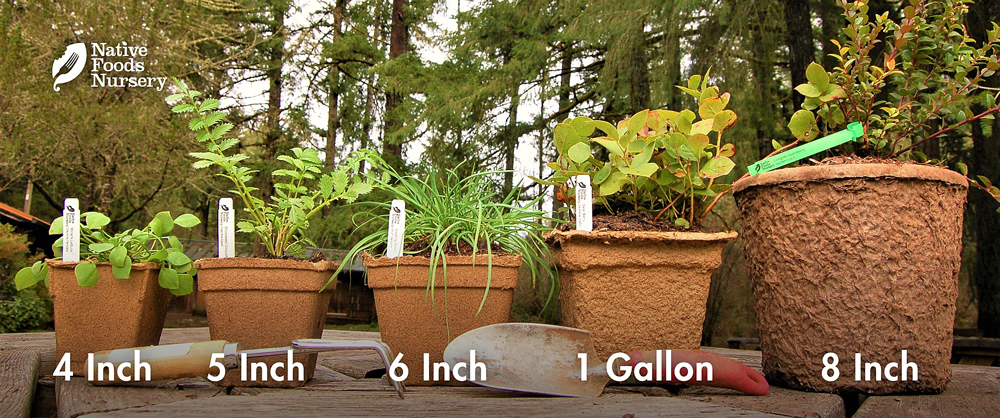Wapato
- Current Stock:
- 0
- Other Names:
- Indian Potato, Broadleaf Arrowhead, Duck Potato
- Latin Name:
- Sagittaria Latifolia
Wapato is a wetland plant native to North America with arrow-shaped leaves, white flowers, and potato-like tubers.
Edible Uses
Underground tubers taste somewhere between a sweet potato and yam, with sweet chestnut notes. These tubers have smooth orange-ish flesh and an amazing flavor.
Native American peoples, wild foragers, and sustainable gardeners have and continue to value this plant as food. Under the right conditions, it is an incredibly productive species, yielding up to 40 tubers per year from a single healthy plant. The starchy tuber is high in carbohydrates and proteins, low in fats, and contains a variety of vitamins and minerals. The rhizomes, young leaves, and young shoots, and young flowers are also all edible raw or cooked.
Ornamental Qualities
This powerful tuberous plant sends up sturdy shoots of beautiful arrow-shaped leaves in Spring. In Summer, cylindrical flower stalks rise with 2-15 whorls of elegant white, three-petaled flowers, transforming into unique green fruits ripening into Autumn. Indian Potato brings lushness and vibrancy to backyard wetlands, ponds, and water features - a wonderful ornamental landscape addition. Leaves and flower die back in the Fall, and re-emerge each Spring.
Environment and Culture
Wapato’s wild home is in ponds, marshes, forest seeps, stream shallows, or similar wet areas throughout North America (standing water less than 12 inches deep). It is often found alongside Cattail, Panicled Bulrush, and other native wetland species. However, Indian Potato doesn’t need to be submerged in order to grow - just kept wet throughout the year.
Wapato is also loved by wildlife. Songbirds dine on the seeds; fish and other aquatic life find protection under its leaves, and many creatures enjoy its sweet tubers. In fact, it’s nicknamed “Duck Potato” because waterfowl eat the seeds and try to dive/dig for the tubers (watch out if you have backyard ducks!). And if it’s not grow underwater, gophers or mice are also known to take a nibble...
Northwest Native American tribes today still value this special plant as food, medicine, and family. Despite great cultural losses, they continue to work towards stewarding and restoring wild populations, both strengthening the integrity of the ecology and sustaining their cultural heritage and wisdom. These strong and recovering peoples and plants deserve our respect, gratitude, and reparations. (Learn more & how to help on our Charitable Giving page.)
Harvest, Care, and Preparation
Wapato can be allowed to spread and multiply prior to harvest. Sweet tubers are attached to rhizomes around the base of the plant and can be as deep as 12 inches under the soil. Traditional harvesting techniques used one’s feet to detach the tuber from the rhizome after leaves have died down, allowing it to float to the surface, without disturbing the rest of the plant. A pitchfork or rake can also be employed. (In backyard ponds with drain valves, water can be temporarily drained to allow for easy harvest.)
Traditionally, tubers were often sliced and dried, or dried and ground into flour before storing for the Winter. For a simple treat, we recommend cooking adding with oil to a casserole dish (to retain moisture), and then baking at 350 degrees for an hour or until soft (bulbs can be bitter unless cooked). Then, they can be eaten whole, mashed, or sliced and pan-fried. Some like to remove the sprout before cooking, and peel afterwards (up to you).
These potato-like tubers have an amazing flavor and beautiful orange-ish flesh, tasting somewhere between a sweet potato and yam, with sweet chestnut notes.
Native Range: All North America
USDA zones: 3-10
Ease of Care: High
Deer Resistance: High
Light Requirements: Full Sun
Soil Type: Any, prefers silt, balanced pH
Water Requirements: Wet or Aquatic
Pollination: Self-Fertile
Bearing Age: 3 yrs from seed
Size at Maturity: 2 feet
Plant Spacing: 2+ feet
Bloom Time: July/August
Harvest Time: October/November, after leaves die back
Pot Sizing Guide

Our policy lasts 30 days. If 30 days have gone by since your purchase, unfortunately we can’t offer you a refund or exchange. To be eligible for a return, your item must be unused and in the same condition that you received it. It must also be in the original packaging. Gift cards are non-refundable. Once your return is received and inspected, we will send you an email to notify you that we have received your returned item. We will also notify you of the approval or rejection of your refund. If you are approved, then your refund will be processed, and a credit will automatically be applied to your credit card or original method of payment, within a certain amount of days.












